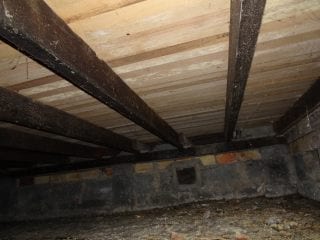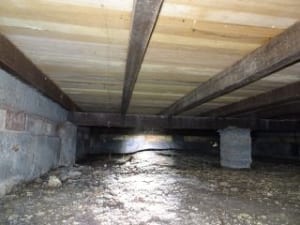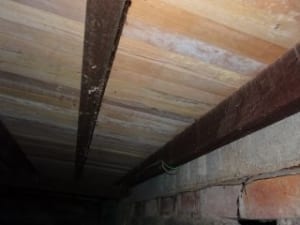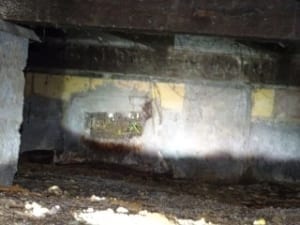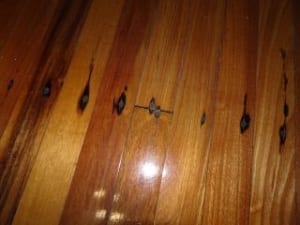Insufficient ventilation causing dry-rot to sub-floor of house.
Dry-rot from insufficient ventilation to sub-floor area. QBIS.
Soil levels around the house were higher than the sub-floor level, allowing seepage and ponding of water.
Mould is forming to the underside of flooring also to framing caused by inadequate sub-floor ventilation can cause serious health problems. Location: sub-floor area of a 1950’s era house.
Inadequate sub-floor ventilation, insufficient clearance between timber and soil, seepage and ponding of water causing dry-rot damage to timber.
Rust marks around flooring nails caused by inadequate ventilation and water ponding to the sub-floor area of this house.
Dry-rot caused by insufficient ventilation to subfloor area of a house. Important notes:
Insufficient ground clearance and rising damp is causing dry rot to sub-floor timber of this 1950’s cavity brick house.
- Highly likely to attract termites.
- Further rot.
- Potentially cause health problems with inhabitants, especially if they have existing respiratory problems.
- These problems (along with movement) are typical for this era of house.
These serious problems (in the majority of cases) cannot be rectified effectively.

